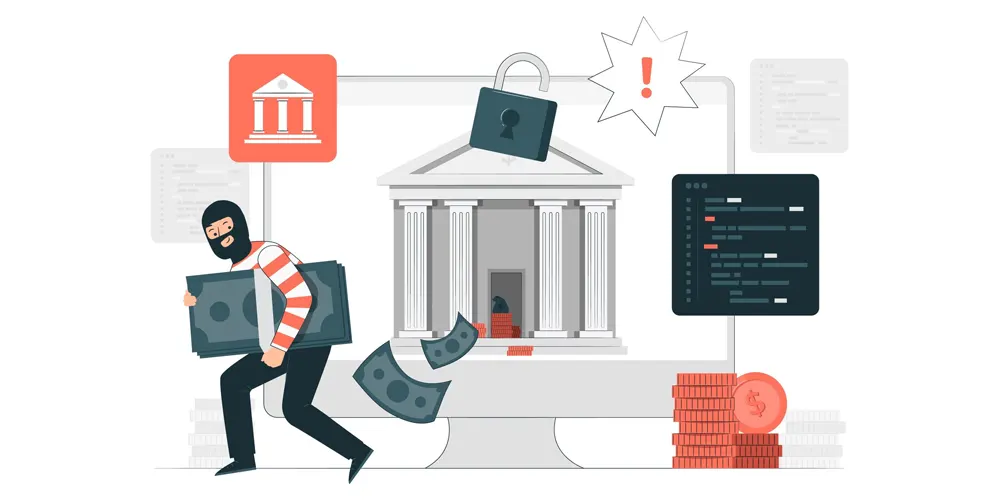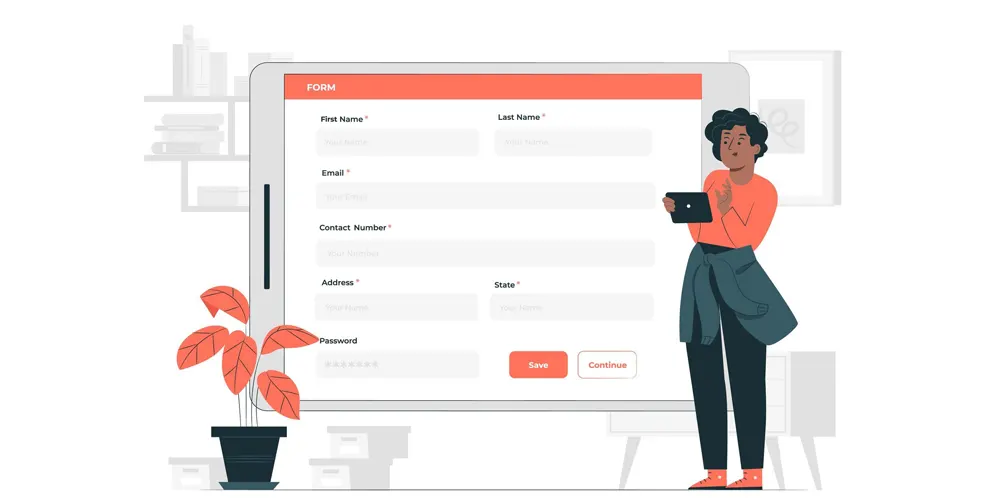Top 10 Types of Robocall Scams Explained!
Telephone scams aren't anything new. As soon as telephones became commercially available in the late 19th century, people came up with ways to scam unsuspecting subscribers.
In today’s day and age, technology has only made these scams more effective and sophisticated. We have robots who sound and talk like humans executing these scams at an unprecedented level.
So how do common folks keep themselves safe from such scams? By learning about the different ways in which they’re executed. When one knows the telltale signs of most scams, the chances of them falling victim to Robocall scams are negated.
For VoIP Carriers, learning about the types of robocall scams will ensure you don't onboard any customers who may misuse your network to execute scams.
If you wish to learn the basics of Robocall scams, you can check our basics guide here.
Let’s get started with the types of Robocall Scams then, shall we?
Impersonation Robocall Scams

Impersonation robocall scams involve fraudsters pretending to be representatives from trusted entities or authorities to deceive victims. Here are detailed explanations of the different types of impersonation robocall scams:
Government Agency Impersonation

Government agency impersonation scams involve fraudsters posing as representatives from various government entities. They try to deceive victims into providing personal information, making payments, or taking other actions.
Here are some common Government Agency Impersonation scams.
1. IRS Robocall Scams
In IRS impersonation scams, fraudsters claim to be IRS agents and contact individuals via phone calls, emails, or text messages.
They often use scare tactics, such as threatening arrest, deportation, or legal action, to pressure victims into paying supposed tax debts or providing sensitive information.
Scammers may use spoofed caller IDs to make it appear as though the calls are coming from legitimate IRS phone numbers. They typically demand immediate payment using methods like wire transfers, prepaid debit cards, gift cards, or cryptocurrency.
The IRS does not initiate contact with taxpayers via phone calls, emails, or text messages for overdue taxes without prior communication via mail.
Moreover, the IRS does not demand payment using specific methods or threaten arrest or deportation over the phone.
2. Social Security Administration (SSA) Robocall Scams
SSA impersonation scams involve fraudsters posing as SSA representatives. They contact individuals to inform them of issues related to their Social Security numbers or benefits. They may claim that the recipient's Social Security number has been suspended due to suspicious activity or that their benefits are at risk.
Scammers often use scripted messages and intimidation tactics to create urgency. This allows them to coerce victims into providing personal information or making payments.
They may request sensitive details such as Social Security numbers, bank account information, or payment via wire transfers or prepaid cards.
The SSA does not suspend Social Security numbers or benefits due to suspicious activity without prior investigation and communication via mail. Additionally, the SSA does not make unsolicited calls requesting personal information or payments.
3. Immigration Robocall Scams
Immigration impersonation scams target individuals, particularly immigrants, by posing as immigration officers or agents. Fraudsters claim that the recipients are facing legal issues, such as deportation or visa violations. They follow it up by demanding immediate payment or personal information to resolve the purported issues.
Scammers exploit the fear and uncertainty surrounding immigration status to manipulate victims into compliance. They may threaten deportation, arrest, or fines if the victims do not comply with their demands, which often involve wire transfers or prepaid cards.
Legitimate immigration authorities do not make unsolicited calls threatening deportation or demanding immediate payment over the phone.
Individuals should verify the authenticity of such calls by contacting official immigration offices or legal representatives.
In conclusion, government agency impersonation scams prey on individuals' fear, confusion, and trust in authority to deceive them.
Utility Company Impersonation

Utility company impersonation scams involve fraudsters pretending to be representatives of utility companies. These can be electricity, gas, water, or internet providers. They deceive victims into making payments or providing personal information.
Here are some common Utility Company Impersonation Scams.
1. Electricity/Gas/Water Provider Robocall Scams
In these scams, fraudsters contact individuals posing as employees of utility companies. They claim that there are issues with the recipient's account or service.
This is usually followed up by threatening to disconnect the utility service due to unpaid bills, overdue payments, or alleged meter tampering.
Scammers use pressure tactics and urgency to manipulate victims into taking immediate action. They may demand payment via wire transfers, prepaid debit cards, or cryptocurrency to prevent service disconnection or avoid additional fees.
Legitimate utility companies typically communicate billing issues or service interruptions via mail or email, rather than unsolicited phone calls.
Additionally, they provide options for payment through official channels and do not require immediate payment over the phone.
2. Internet/Phone Provider Robocall Scams
Fraudsters impersonate representatives from internet or phone service providers. They claim there are technical issues or security breaches with the recipient's account.
Falsely stating that the recipient's internet connection is compromised or that their personal information is at risk is a common tactic.
Scammers exploit recipients' concerns about connectivity or privacy to coerce them into providing personal information or making payments. They may offer to fix the supposed issues remotely for a fee or request payment for fake services.
Legitimate internet and phone providers do not make unsolicited calls requesting personal information or payment for technical support services.
They often advise customers to contact customer service directly if they encounter any issues with their accounts or services.
In conclusion, these utility company impersonation scams exploit individuals' trust in essential services and their desire to avoid service disruptions or security threats.
Tech Support Impersonation

Tech support impersonation scams involve fraudsters posing as representatives from well-known technology companies. They deceive victims into paying for fake services or providing access to their devices.
Here are some common types of Tech Support Scams.
1. Microsoft/Apple Tech Support Robocall Scams
Scammers impersonate tech support agents from reputable companies like Microsoft or Apple. They contact individuals via phone calls, emails, or pop-up messages on their computers. Next, they claim that the recipient's device is infected with viruses, experiencing technical issues, or at risk of security breaches.
Fraudsters use fear tactics to create urgency and pressure victims into taking immediate action. They may instruct recipients to visit a fake website, download malicious software, or provide remote access to their devices.
Once granted access, scammers may install malware, steal personal information, or charge for unnecessary services.
Legitimate tech support companies do not initiate contact with customers in an unsolicited manner. They also do not ask for payment upfront or request remote access to devices without explicit consent.
Recipients should be wary of unsolicited communications claiming technical issues. They must always verify the authenticity of any support requests by contacting the official customer support channels of the respective companies.
2. Software License Robocall Scams
Scammers contact individuals claiming that their software licenses have expired or been invalidated, often posing as representatives from software companies or resellers.
They assert that the recipient must renew their license or upgrade to avoid legal consequences or service interruptions.
Fraudsters use persuasion tactics to convince victims to make payments for fake software licenses or upgrades.
They may pressure recipients into providing credit card information, bank account details, or cryptocurrency payments to renew their licenses.
Legitimate software companies typically communicate license expiration or renewal notices via email or within the software interface.
Recipients should verify the authenticity of any license renewal requests by contacting the official customer support channels of the respective companies.
Thus, tech support impersonation scams exploit individuals' reliance on technology and their concerns about security and technical issues.
Financial Institution Impersonation

Financial institution impersonation scams involve fraudsters pretending to be representatives from banks, credit card companies, or other financial institutions.
They deceive victims into providing personal information, making payments, or taking other actions.
Here are some common Financial Institution Impersonation Scams.
1. Bank/Credit Card Company Robocall Scams
Fraudsters pose as bank employees or representatives from credit card companies and contact individuals via phone calls, emails, or text messages.
They claim there is suspicious activity on the recipient's account, such as unauthorized transactions or compromised security.
Scammers use urgency and fear tactics to pressure victims into providing personal information or making payments.
They may request sensitive details such as account numbers, Social Security numbers, or PINs under the guise of verifying identity or preventing fraud.
Legitimate financial institutions do not make unsolicited calls requesting personal information or payments.
They advise customers to contact customer service directly if they suspect fraudulent activity on their accounts and provide official channels for reporting suspicious communications.
2. Loan/Debt Collection Robocall Scams
Scammers falsely claim that the recipient owes debts, such as overdue loans, unpaid bills, or delinquent taxes. They pose as debt collectors or representatives from financial institutions.
Next, they threaten legal action, arrest, or asset seizure unless immediate payment is made through methods like wire transfers or prepaid cards.
Fraudsters use intimidation tactics and harassment to coerce victims into making payments. They may use fake caller IDs to make it appear as though the calls are coming from legitimate debt collection agencies or law enforcement agencies.
Legitimate debt collectors and financial institutions adhere to regulations outlined in the Fair Debt Collection Practices Act (FDCPA) and other consumer protection laws.
They provide written notice of debts and offer options for resolving disputes or negotiating payment arrangements.
3. Investment Robocall Scams
Scammers offer bogus investment opportunities with high returns and low risks, posing as financial advisors, brokers, or representatives from investment firms.
They promise guaranteed profits and use persuasive tactics to convince victims to invest their money in fraudulent schemes.
Fraudsters use deception and manipulation to lure victims into investing in fake stocks, cryptocurrencies, or real estate ventures.
They may create fake investment portfolios, provide false testimonials, or use high-pressure sales tactics to expedite investment decisions.
Legitimate investment firms are registered with regulatory authorities like the Securities and Exchange Commission (SEC) and provide detailed disclosures about investment risks and potential returns.
They caution investors to conduct thorough research and seek professional advice before making investment decisions.
*These impersonation scams exploit individuals' trust in banks, credit card companies, and investment firms to steal personal information or money. *
Healthcare Robocall Scams

Healthcare robocall scams involve fraudulent schemes targeting individuals' health concerns, insurance coverage, or medical needs.
Here are some common types of Healthcare Robocall Scams.
1. Health Insurance Robocall Scams

Fraudsters use robocalls to impersonate insurance agents or representatives from healthcare organizations. They offer fake health insurance plans with low premiums and comprehensive coverage.
Claiming to provide affordable health insurance options to individuals, including those with pre-existing conditions is also common.
Scammers exploit individuals' concerns about healthcare costs and coverage to lure them into purchasing fake insurance plans.
They may promise benefits such as coverage for medical services, prescription drugs, or pre-existing conditions. All without ever delivering legitimate insurance coverage.
Legitimate health insurance providers do not use robocalls to solicit customers or offer unsolicited insurance plans.
Individuals should verify the authenticity of insurance offers through official channels and avoid providing personal information or payments to unknown callers.
2. Medical Product Robocall Scams

These involve promoting unproven or counterfeit medical products, supplements, or treatments claiming to cure diseases or provide miraculous health benefits.
They may offer products such as dietary supplements, herbal remedies, or medical devices with false claims of effectiveness.
Fraudsters exploit individuals' health concerns and desires for alternative treatments to convince them to purchase fake medical products.
They may use testimonials or misleading information. This is to create the impression that the products are endorsed by medical professionals or have been scientifically proven to be effective.
Legitimate medical products undergo rigorous testing and evaluation by regulatory authorities to ensure safety and efficacy.
Individuals should consult healthcare professionals before using any medical products and be cautious of unsolicited offers promising miraculous health benefits.
3. Healthcare Enrollment Robocall Scams

Scammers use robocalls to falsely claim that individuals need to enroll in new healthcare plans. Another trick involves getting them to update their existing coverage to comply with regulatory requirements.
They may use scare tactics, such as threats of penalties or loss of benefits, to pressure victims into providing personal information or making payments.
Fraudsters exploit individuals' confusion or lack of understanding about healthcare regulations and enrollment procedures to deceive them. They can thus get victims to disclose sensitive information.
They may request personal details such as Social Security numbers, Medicare or Medicaid IDs, or bank account information.
Legitimate healthcare enrollment processes are typically conducted through official channels, such as government agencies or certified insurance brokers.
Individuals should verify the authenticity of enrollment requests and avoid providing personal information to unknown callers.
These healthcare robocall scams prey on individuals' health concerns, vulnerabilities, and desire for affordable healthcare options.
Prize or Sweepstakes Robocall Scams

Certainly! Prize or sweepstakes robocall scams involve fraudulent schemes in which scammers use automated phone calls to inform recipients that they have won a prize or sweepstakes. Here are detailed explanations of the different types of prize or sweepstakes robocall scams:
1. Lottery Prize Robocall Scams

Scammers use robocalls to inform recipients that they have won a lottery prize, often from well-known lotteries or organizations.
They claim that the recipient's entry was selected randomly, and they are entitled to claim a large sum of money or valuable prizes.
Fraudsters create a sense of excitement and urgency to manipulate recipients into believing they have won a significant prize.
They may request payment of taxes, fees, or handling charges to claim the supposed winnings, under the guise of covering administrative costs.
Legitimate lottery winnings do not require recipients to pay fees or taxes upfront to claim prizes. Individuals should be cautious of unsolicited communications claiming lottery winnings and verify the legitimacy of such claims through official channels.
2. Sweepstakes Prize Robocall Scams

Scammers use robocalls to inform recipients that they have won a sweepstakes prize, often from well-known companies or organizations.
They claim that the recipient's entry was selected randomly, and they are eligible to claim valuable prizes such as cash, vacations, or electronic gadgets.
Fraudsters use excitement and anticipation of winning a prize to manipulate recipients into providing personal information or making payments.
They may request payment via wire transfers, prepaid debit cards, or cryptocurrency, under the guise of covering taxes or administrative costs.
3. Free Vacation Robocall Scams

Scammers use robocalls to inform recipients that they have won a free or heavily discounted vacation package, often to popular tourist destinations.
They claim that the recipient's entry was selected randomly, and they are entitled to claim the vacation package as a prize.
Fraudsters use the allure of free or discounted vacations to entice recipients into providing personal information or making payments. They may request payment for taxes, fees, or booking costs associated with the vacation package.
Legitimate vacation giveaways do not require recipients to pay fees or taxes upfront to claim prizes. Individuals should be cautious of unsolicited communications claiming free vacations and verify the legitimacy of such offers through official channels.
These prize or sweepstakes robocall scams exploit individuals' desires for excitement and the chance to win valuable prizes.
These are just a few common examples of the many types of robocall scams that exist. Scammers continuously adapt their tactics to exploit current events, economic conditions, and technological advancements.
Ending With
The world is full of creative and ingenious people. The only problem is that many of these are out to scam you off your hard earned money. Robocall scams are the latest tool at their disposal that helps them scam you more effectively.
Knowing how these robocall scams work will only take you halfway to avoiding being scammed. The other half is learning about the different types of robocall scams which we hope you may have through this article.
Educate yourself and stay safe. Team ConnexCS hopes you never get scammed!
























































































































